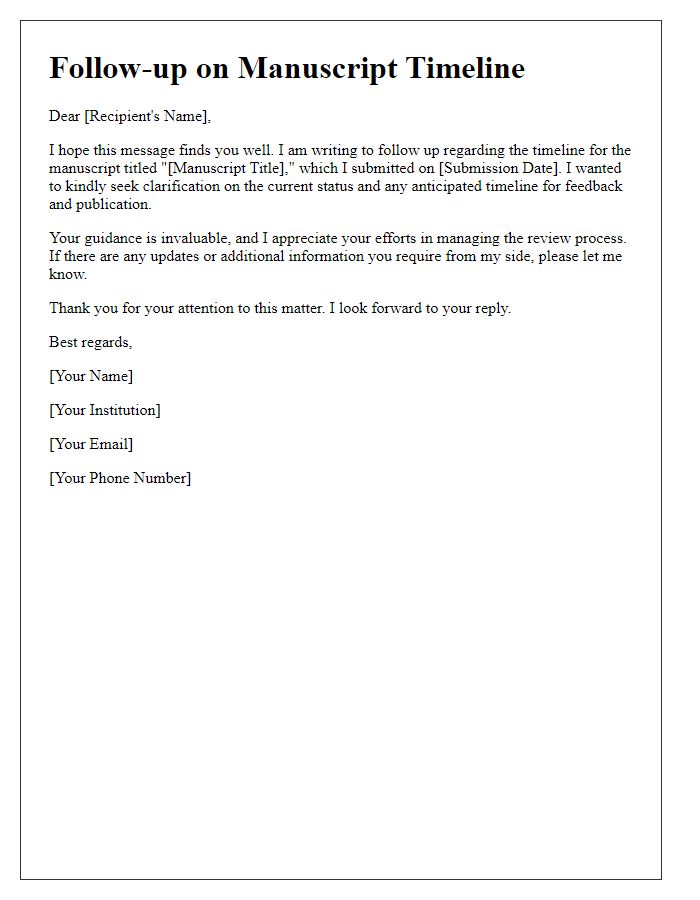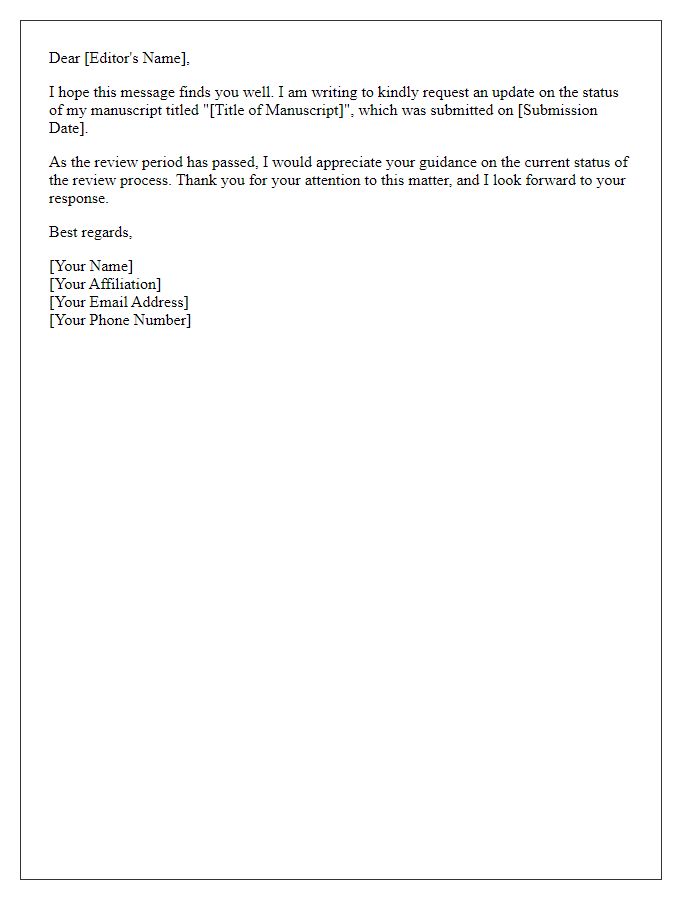Have you ever found yourself anxiously waiting for a response after submitting a manuscript? It's a common experience for many authors, and a polite follow-up can be just what you need to ease those nerves. In this article, we'll explore an effective template that helps you craft the perfect letter to check in on your submission status. So, if you're ready to take the next step in getting your work recognized, read on for all the details!

Journal editor's contact information
A follow-up on manuscript submission is essential for maintaining communication with journal editors. For instance, in the case of an academic journal, sending a polite inquiry can provide updates on the status of the manuscript under review. Editors typically appreciate concise emails that reference the manuscript title, submission date, and manuscript identification number. This allows editors to locate the submission quickly in their system. Including clear contact details, such as the submitter's name, institutional affiliation, and email address, can foster efficient communication. Timely follow-ups, usually between six to eight weeks after submission, ensure that authors remain informed about their work's progress in the peer review process, potentially influencing publication timelines.
Manuscript details (title, authors, reference number)
Following up on the manuscript submission titled "Innovative Approaches to Sustainable Energy" authored by Dr. Emily Johnson, Dr. Mark Thompson, and Dr. Sarah Lee, reference number 12345-SUS-2023, this inquiry seeks to confirm the current status of the review process. The manuscript explores alternative energy technologies and their implementation in urban environments, highlighting case studies from cities like San Francisco and Berlin. Understanding the timeline for feedback and any potential revisions needed is vital for aligning with upcoming conference deadlines in February 2024. Additionally, clarity on the peer review timeline would greatly assist in managing ongoing research commitments.
Submission date and current status inquiry
A manuscript submission, particularly in the context of academic publishing, necessitates clear communication between authors and journals. Following up after a submission, typically around three months after the original date, is a standard procedure within the publishing industry. Authors may inquire about the current status, including peer review feedback and editorial decisions, since the average time for initial decisions often ranges between 6 to 12 weeks. Journals like the Journal of the American Medical Association or Nature might have specific timelines due to their high volume of submissions. Utilizing professional language and courteous tone in the follow-up message fosters a positive relationship with editorial staff while seeking instrumental updates on the evaluation process, ensuring the publishing timeline remains clear and on track.
Expression of continued interest and availability for further information
The follow-up on manuscript submission can show professionalism and commitment. Authors may express continued interest in their submitted work, such as a research article on climate change, examining its impact on global temperature trends. They may reference the original submission date, which could be in early 2023, and request updates on the review process. Mentioning their availability for any additional information, such as clarifications on methodology or results, helps maintain open communication with the editorial team at the journal, such as the Journal of Climate Research, renowned for its rigorous peer-review process and high impact factor. This proactive approach emphasizes the author's dedication to academic dialogue and publication.
Professional closing and contact information
Following the submission of a manuscript to an esteemed academic journal, authors often seek updates regarding the review status to ensure timely dissemination of research findings. Contact information for professional correspondence typically includes a formal signature with the author's full name, academic titles, affiliation (such as university or research institution name), department, and complete mailing address. Emphasis on communication may also include email addresses and phone numbers for accessibility. A closing statement, often cordial and respectful, enhances the professionalism of the correspondence while reminding the journal editor of the manuscript's title and submission date, fostering an efficient review process.
Letter Template For Follow-Up On Manuscript Submission Samples
Letter template of follow-up seeking clarification on manuscript timeline













Comments